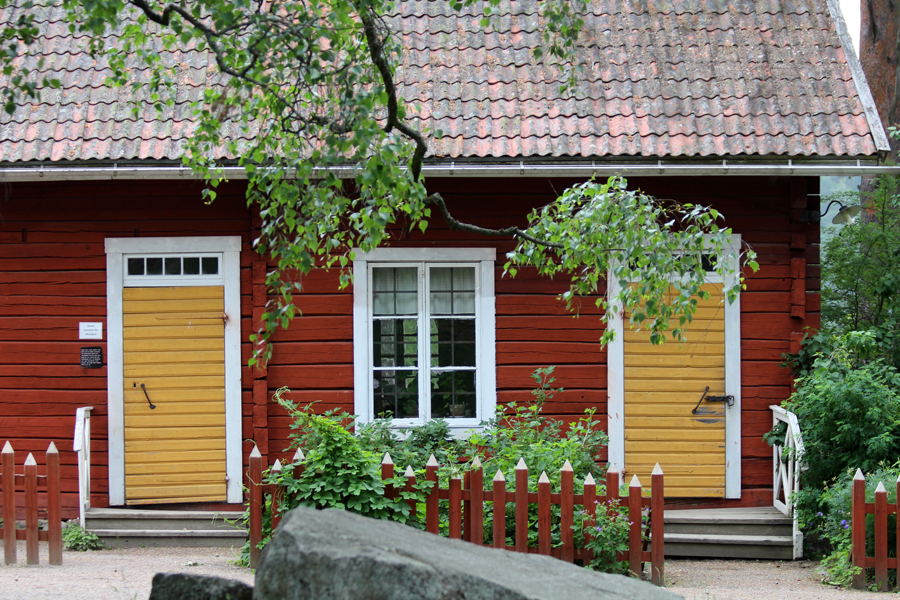Village School
In 1842, public education was introduced in Sweden. Schools were supposed to raise and educate children, but the state also wanted to control the growing number of poor people.
The most important subjects in school were reading, writing, arithmetic, Christianity, Bible history and church hymns.
Maintenance of the school garden was also part of the curriculum. Every school had a garden for cultivation of flowers and vegetables and a tree nursery. Vegetables commonly grown around the turn of the century are grown in the Museum´s school garden. Many of them can be seen on the wall charts inside the school.

When this school was built in Råsbo in Nora Parish in 1877, the school board donated peonies and gooseberry, red currant and white currant bushes and fruit and maple trees to the school.
Many parents did not want their children to go to school. They were needed as labour on the farm. Sometimes children did not go to school because they did not have good clothes and shoes.
At first, public schools were for poor children. Children from families that were better off received private tutoring at home or were sent to private schools. In village schools like this one, girls and boys of all ages sat together on one classroom. Many of them came a long way to attend school.
The teacher lived in the same building as the school. Public school teachers in rural areas were usually women. In addition to teaching, they repaired school desks, cleaned, made their own ink and took care of the school garden. The school teacher might also be the parish clerk, church organist or Sunday school teacher.




